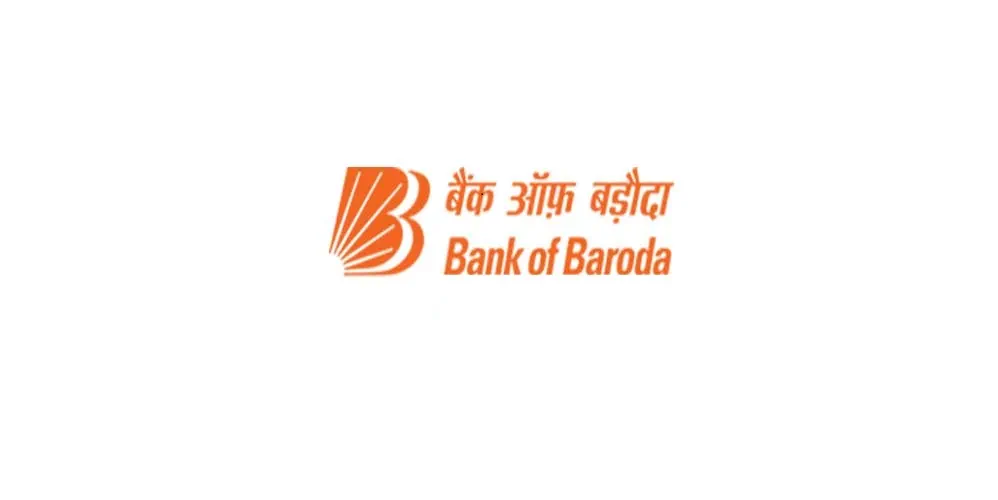
सावधि जमा बनाम आवर्ती जमा: कौन सा बेहतर विकल्प है?
14 अप्रैल 2023

Table of Content
The process of wealth creation requires discipline. Money must be put away systematically, over a period for wealth to grow. Whether you choose to invest in the stock market, commodities market, mutual funds or even opt for conservative methods of savings such as fixed deposits and recurring deposits; each way of savings comes with its own set of features and benefits. Most people begin with small monthly savings in the form of a recurring deposit, which they convert into a fixed deposit upon maturity. But this is just one way to go about it. In this article, we shall highlight the key differences between fixed deposit and recurring deposits. However, to do so, we need to understand what a fixed and a recurring deposit actually is.
What is a Fixed Deposit?
Fixed deposit or FD (also so known as term deposits) refer to the financial instruments provided by banks through which one can lock away a sum of money for a specific duration and earn a monthly, quarterly, half-yearly, annual or cumulative interest at the end of the term. As the term ‘fixed’ suggests, one cannot withdraw money from a FD until the end of the term. If you choose premature withdrawal of fixed deposits , you have to pay a penalty to the bank.
What is a Recurring Deposit?
A recurring deposit , on the other hand, refers to a disciplined way of putting away a fixed sum of money in an account every month. One needs to open a special recurring deposit account and can earn the same interest rate as offered on FDs. RDs are a great way to put away savings every month until a more substantial amount of money is accrued, which can then be put away as an FD.
FD vs RD – A Comparison
Let us look at the main differences between FDs and RDs:
| Fixed Deposits | Recurring Deposits | |
|---|---|---|
| Purpose of Deposit | Fixed deposits are an investment scheme that one can use to invest their surplus money and earn interest at a usually higher rate than a savings bank account. | RDs, on the other hand, are a financial instrument that teaches one to inculcate a habit of saving up a fixed amount of money each month. |
| Duration of Deposit | The minimum and maximum durations of the FD are 7 days and 10 years, respectively. | The minimum and maximum duration of RDs are 6 months and 10 years, respectively. |
| Renewals | FDs can be auto renewed. | RDs do not have the option of auto-renewal. |
| Premature Withdrawals | In the case of FDs, premature withdrawal is subject to penalties. | In the case of RDs, premature withdrawals are possible. However, if one chooses to invest the prematurely withdrawn amount, then they will have to settle for an interest rate that is 1% lower than the base rate as a penalty. |
Fixed Deposit vs Recurring Deposit – Which Deposit Can Earn You More?
Let's consider an example to decide which yields more: recurring deposits or fixed deposits.
Let's assume that Mr. Jaiswal invests Rs. 12,000 in an FD for one year.
Similarly, he invests an equal amount of Rs. 1,000 per month for 1 year in an RD.
The rate of interest for both schemes is 7.2%, compounded monthly. Thus, the investment amount for the FD will keep increasing by Rs. 12,000 yearly.
In the case of RD, it is equivalent to increasing Rs. 1,000 per month.
| Tenure | FD/annum in Rupees | Interest @7.2% in Rupees | FD Maturity Amount in Rupees | RD/month in Rupees | Interest @ 7.2% in Rupees | RD Maturity Amount in Rupees | Difference between FD and RD maturity amount in Rupees |
|---|---|---|---|---|---|---|---|
| 1 year | 12,000 | 893 | 12,893 | 1,000 | 476 | 12,476 | 417 |
| 2 years | 24,000 | 3705 | 27,705 | 1,000 | 1,874 | 25,847 | 1,858 |
| 3 years | 36,000 | 8650 | 44,650 | 1,000 | 4,900 | 40,900 | 3,750 |
As seen from the table given above, at the end of one year, Mr Jaiswal will get Rs. 12,893 from an FD compared to Rs. 12,476 from investing in an RD.
The difference is Rs. 417. With an increase in investment tenure, the difference between the returns from the two investment schemes continues to increase.
Thus, at the end of the 3rd year, the difference between the FD and RD maturity amounts is around Rs. 3,750.
Therefore, one can earn more by investing in an FD than in an RD.
FD vs RD – Which is Better?
If a comparison is drawn between FD and RD, then FD is bound to come out as a better investment option. This is because of the following reasons:
- The minimum investment tenure in the case of an FD is 7 days. Whereas the minimum deposit tenure of an RD is 6 months. Thus, FD has more liquidity.
- While there is a tax saving FD that allows one to claim for tax deductions up to Rs. 1.5 lakhs, there is no such option in the case of an RD.
- In the case of FDs, the monthly or quarterly payout is available, whereas, in the case of RDs, most banks do not offer quarterly or monthly payout.
- The option for auto-renewal is available in the case of an FD. But RDs cannot be automatically renewed.
Thus, one can easily conclude that FD is a better option because of these aspects.
What Should You Choose – FD or RD?
Since both FD and RD have their share of advantages and disadvantages, deciding which one to choose might often seem difficult. To make it easier, one might do the following:
If one has a handsome amount of money and is looking forward to investing it as a lump sum, that person should go for FDs. FDs are an ideal option for earning more in the long run.
However, if one does not have a sizable amount to invest in a lump sum, then the wisest decision would be to invest it in an RD. In the case of an RD, one can deposit small but equal amounts of money each month.
Conclusion
FDs are one of the simplest ways to invest one's surplus money. Thus, one needs to decide the investment tenure and the investment amount as per one's financial goals and conditions. However, before investing in an FD, one must use an FD calculator to calculate in advance the return amount one is likely to receive. This will help one make an informed decision.
Popular Articles
Related Articles



What is CVV on a Debit Card? Understanding Its Importance and Security Features


How to Update Your FASTag KYC: Step-by-Step Guide for Online & Offline Methods




The Importance of Pension Funds: Secure Your Future with Steady Retirement Income

-
डिस्क्लेमर
इस लेख/इन्फोग्राफिक/चित्र/वीडियो की सामग्री का उद्देश्य केवल सूचना से है और जरूरी नहीं कि यह बैंक ऑफ बड़ौदा के विचारों को प्रतिबिंबित करे। सामग्री प्रकृति में सामान्य हैं और यह केवल सूचना मात्र है। यह आपकी विशेष परिस्थितियों में विशिष्ट सलाह का विकल्प नहीं होगा । बैंक ऑफ बड़ौदा और/या इसके सहयोगी और इसकी सहायक कंपनियां सटीकता के संबंध में कोई प्रतिनिधित्व नहीं करती हैं; यहां निहित या अन्यथा प्रदान की गई किसी भी जानकारी की पूर्णता या विश्वसनीयता और इसके द्वारा उसी के संबंध में किसी भी दायित्व को अस्वीकार करें। जानकारी अद्यतन, पूर्णता, संशोधन, सत्यापन और संशोधन के अधीन है और यह भौतिक रूप से बदल सकती है। इसकी सूचना किसी भी क्षेत्राधिकार में किसी भी व्यक्ति द्वारा वितरण या उपयोग के लिए अभिप्रेत नहीं है, जहां ऐसा वितरण या उपयोग कानून या विनियमन के विपरीत होगा या बैंक ऑफ बड़ौदा या उसके सहयोगियों को किसी भी लाइसेंसिंग या पंजीकरण आवश्यकताओं के अधीन करेगा । उल्लिखित सामग्री और सूचना के आधार पर किसी भी वित्तीय निर्णय लेने के लिए पाठक द्वारा किए गए किसी भी प्रत्यक्ष/अप्रत्यक्ष नुकसान या देयता के लिए बैंक ऑफ बड़ौदा जिम्मेदार नहीं होगा । कोई भी वित्तीय निर्णय लेने से पहले अपने वित्तीय सलाहकार से सलाह जरूर लें।
सावधि जमा (FD) पर पूरी गाइड
भारत में, फिक्स्ड डिपॉजिट (एफडी) को अपनी मेहनत की कमाई का निवेश करने के सबसे सुरक्षित तरीकों में से एक माना जाता है। एफडी खाता न केवल खोलना आसान है, बल्कि इसमें अच्छा रिटर्न भी देते हैं। यदि किसी की प्राथमिकता सुनिश्चित आय प्राप्त करते हुए जोखिम उठाए बिना अपने वित्तीय लक्ष्यों को पूरा करने के लिए पैसे बचाना है, तो एफडी में निवेश करना सबसे अच्छे विकल्पों में से एक है।
कर बचत सावधि जमा क्या है?
ब्याज आय अर्जित करने के लिए सावधि जमा खाता खोलना आपके बैंक खाते में रखी धनराशि का उपयोग करने का बेहतरीन तरीका है। लेकिन सावधि जमा खाता के विकल्प का चयनकर , आप ब्याज आय अर्जित करके कर लाभ प्राप्त कर सकते हैं। बैंक ऑफ बड़ौदा का बड़ौदा टैक्स सेविंग फिक्स्ड डिपॉजिट आपको आय अर्जित करते समय कर की बचत करने में मदद करता है।

